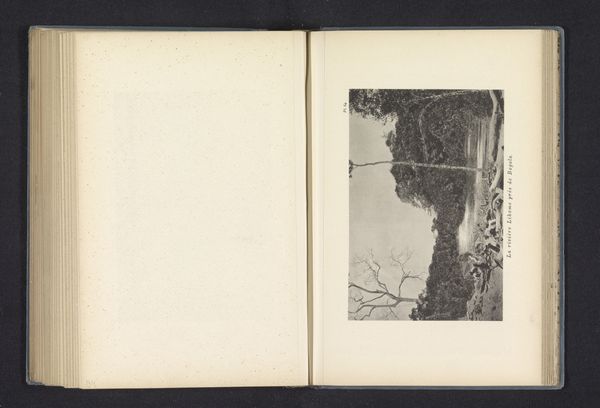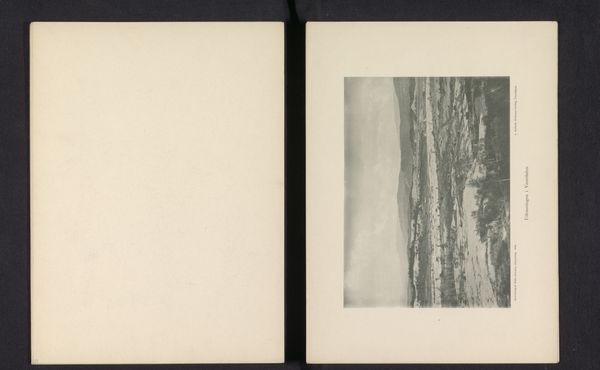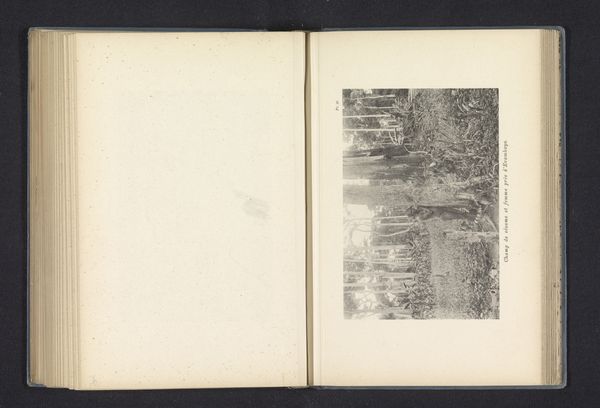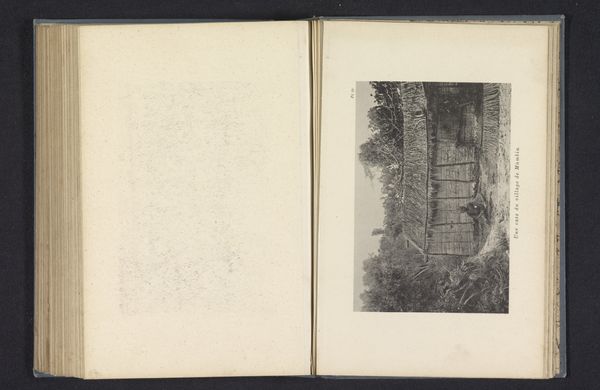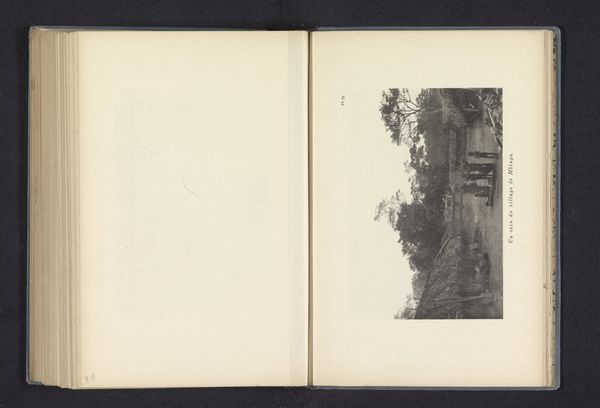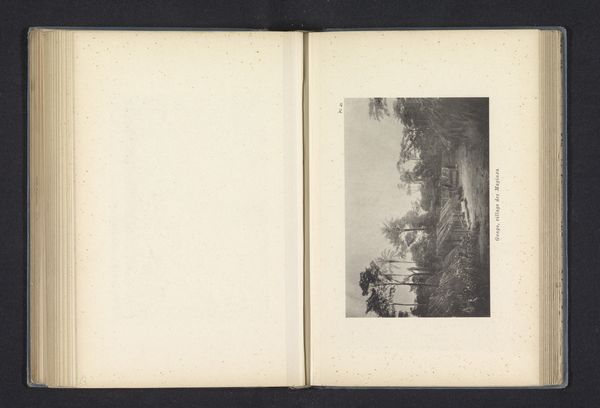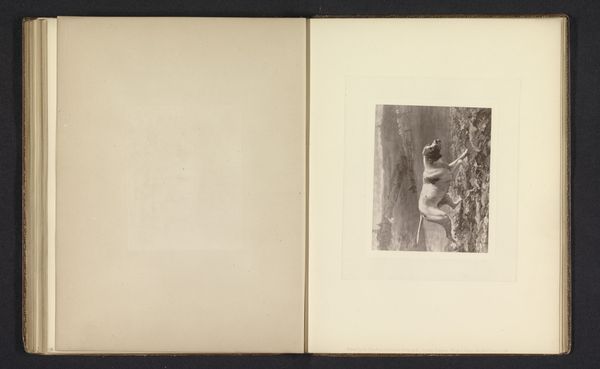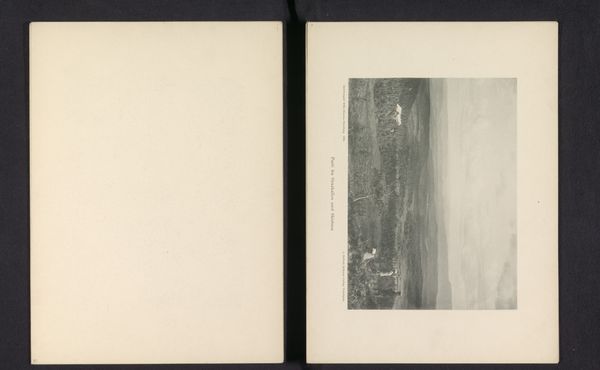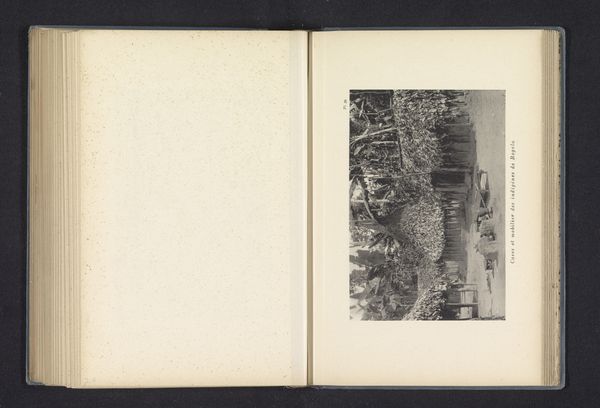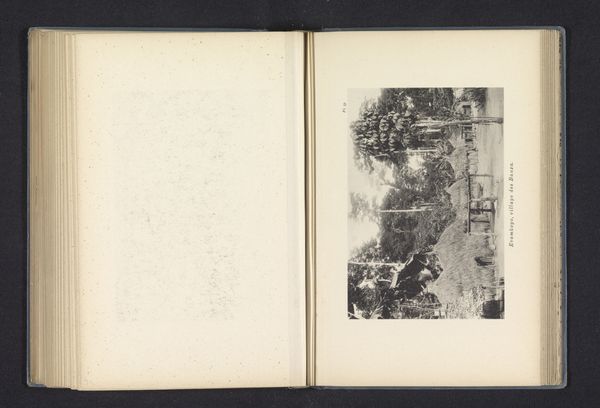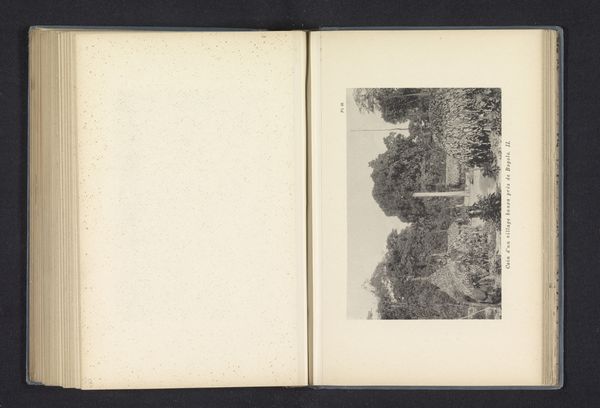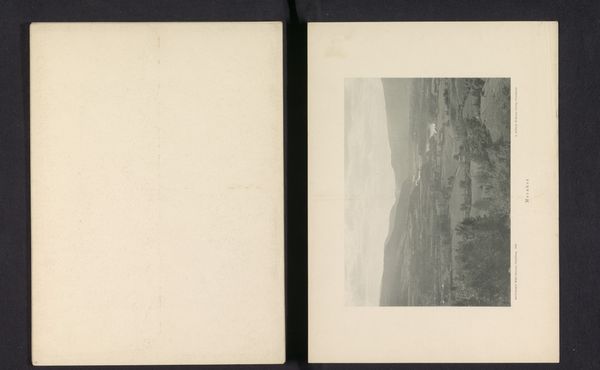
Gezicht op het restaurant Fossestuen bij de waterval Nedre Leirfoss bij Trondheim before 1897
0:00
0:00
print, photography
#
still-life
#
aged paper
#
homemade paper
#
pale palette
# print
#
hand drawn type
#
landscape
#
white palette
#
paper texture
#
photography
#
thick font
#
white font
#
tonal art
#
realism
#
historical font
Dimensions: height 161 mm, width 219 mm
Copyright: Rijks Museum: Open Domain
Editor: So, here we have "Gezicht op het restaurant Fossestuen bij de waterval Nedre Leirfoss bij Trondheim," a photograph, taken before 1897 by Wilhelm Dreesen. It feels…stark. The monochrome and almost clinical presentation – it’s presented with a blank backing sheet and text on the image itself – lends it an air of objectivity. What do you see when you look at this work? Curator: The photograph's appeal is immediately rooted in its physicality: the texture of the aged paper, the deliberate act of photographic printing, and even the choices made in typesetting. I find myself focusing less on the romantic depiction of nature and more on the social conditions that permitted its existence. Who had access to photographic materials? What was the labor involved in the production of the print, and where was the photograph meant to be consumed? Editor: I see what you mean. The crispness of the photography almost hides how labour-intensive image making and printing would have been then. Curator: Precisely! Think about the cultural value attached to these scenic views and who benefits from representing them. The Fossestuen restaurant becomes a site of commercial and social exchange as much as a vista to admire. Were these photographs intended for mass distribution as keepsakes? Understanding this process and materiality allows us to analyze power dynamics, access, and even question traditional notions of "nature" as something untouched by human influence. It makes you wonder what alternatives and oppositions existed within this period and place. Editor: That’s really shifted my thinking on the photograph. Focusing on the process opens up a way bigger picture than just the waterfall itself. Curator: Exactly! It invites us to reconsider how the materials and mode of production fundamentally shaped its meaning. Every photograph requires financial input into equipment and expertise and the distribution network to find the appropriate audience to exchange it within. Editor: Well, I’ll certainly look at landscape photographs differently now, considering who makes the image, why, and at whose expense. Curator: I am so glad you see it differently. Remember that what makes and frames are a vital part of what you see.
Comments
No comments
Be the first to comment and join the conversation on the ultimate creative platform.
